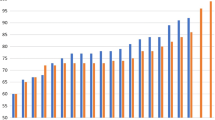Abstract
The biomechanics of the femoral fracture brace were investigated for a series of 57 patients throughout the period of fracture healing. Measurements were made of the loads in the brace at the level of the fracture and at the knee, together with the total load carried on the limb. The results obtained, together with some preliminary intracast pressure measurements, show that the castbrace provides a means whereby the stress acting across the healing fracture is regulated by offloading into the case under the control of physiological parameters. It is suggested that this leads to optimisation of the fracture stress throughout the period of healing and that the resulting stress-induced osteogenic activity and mineral salt deposition lead to union of the fracture significantly sooner than when treatment is by other conservative techniques. The data obtained have allowed the compilation of a biomechanical description of the brace in which the main avenues of load transfer are defined. The results are shown to correlate well with clinical results on the function of the brace.
Similar content being viewed by others
References
Amtmann, E. (1971) On functional adaption of long bones: investigation on human femora.Gegenbaurs Morph. Jahrb.,117, 224–231.
Bowker, P. andDavidson, L. M. (1979) Development of a cushion to prevent ischial pressure sores.Br. Med. J. 2, 958–961.
Bowker, P., Pratt, D. J., Wardlaw, D. andMcLauchlan, J. (1978) Early weight-bearing treatment of femoral shaft fractures using a cast-brace: a preliminary biomechanical study.J. Bioeng.,2, 463–467.
Brown, P. E. andPreston, E. T. (1975) Ambulatory treatment of femoral shaft fractures with a cast-brace.J. Trauma,15, 860–868.
Colley, J. D. andRoper, B. A. (1978) Experience in the treatment of femoral shaft fractures using a Vitrathene cast-brace.Pros. Orth. International.,2, 76–78.
Connolly, J. F. andKing, P. (1973) Closed reduction and early cast-brace ambulation in the treatment of femoral shaft fractures.J. Bone Jt. Surg.,55-A, 1559–1580.
Dencker, H. (1965) Mortality related to various methods of treatment of femoral shaft fractures.Acta Chir. Scand.,130, 449–457.
Garber, S. L., Krouskop, T. A. andCarter, R. E. (1978) A system for clinically evaluating wheelchair pressure-relief cushions.Am. J. Occup. Ther.,32, 565–670.
Hardy, A. E. (1979) Pressure recordings in patients with femoral fractures in cast-braces and suggestions for treatment.J. Bone Jt. Surg.,61-A, 365–370.
London Hospital, (1978) The treatment of fractured femurs by means of a cast brace. DHSS reference R/E 1049/40. Final report.
Meggitt, B. F. (1978) Cast-bracing in middle segment fractures of the lower limb. Paper presented at Stoke-on-Trent, 16th June, BES meeting on ‘Recent developments in methods and materials in fracture fixation’.
Mooney, V., Einbund, M. J., Rogers, J. E. andStauffer, E. S. (1971) Comparison of pressure distribution qualities in seat cushions.Bull. Prosth. Res.,10–15, 129–143.
Pauwels, Fr. (1968) Beitrag zur funktionellen anpassung der corticalis der Rohren-Knochen. Untersuchungen an drei rachitisch deformierten femora, 12 Beitrag zur funktionellen Anatomie und Kansalen Morphalgie des Stutzapparates.Z. Anat. Entwickl-Gesch.,127, 121–137.
Pratt, D. J., Bowker, P., Wardlaw, D. andMclauchlan, J. (1979) Load measurement in orthopaedics using strain gauges.J. Biomed. Eng.,1, 287–296.
Pratt, D. J., Bowker, P., Wardlaw, D. andMclauchlan, J. (1980) A monitor for plotting pressure contours inside a plaster cast,Eng. in Med., in press.
Sedel, L., Christel, P., Dewas, J., de Charentenay, F. X. andLeray, J. (1980) Comparison of the effects of intramedullary nailing or plating on the mechanical properties of fracture callus.J. Biomed. Eng.,2, 89–92.
Wardlaw, D. (1980) Cast-bracing in practise. A two year study.Injury, in press.
Wardlaw, D. (1977) The cast-brace treatment of femoral shaft fractures.J. Bone Jt. Surg.,59-B, 411–416.
Wardlaw, D., Mclauchlan, J., Pratt, D. J. andBowker, P. (1980) A biomechanical study of cast-brace treatment of femoral shaft fractures.J. Bone Jt. Surg., in press.
Author information
Authors and Affiliations
Rights and permissions
About this article
Cite this article
Pratt, D.J., Bowker, P., Wardlaw, D. et al. Biomechanical study of the function of the femoral fracture brace during stance. Med. Biol. Eng. Comput. 18, 667–673 (1980). https://doi.org/10.1007/BF02443144
Received:
Issue Date:
DOI: https://doi.org/10.1007/BF02443144




